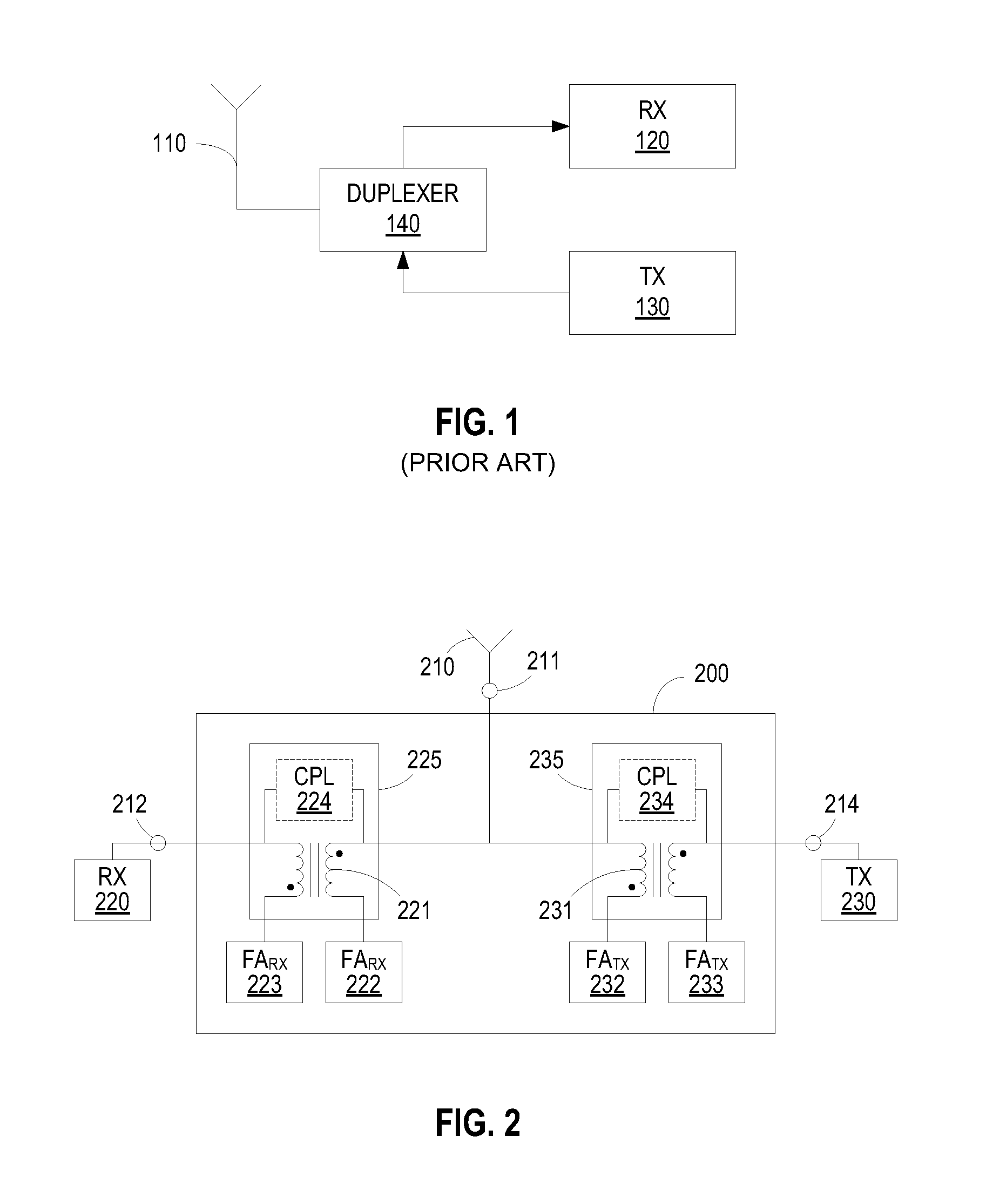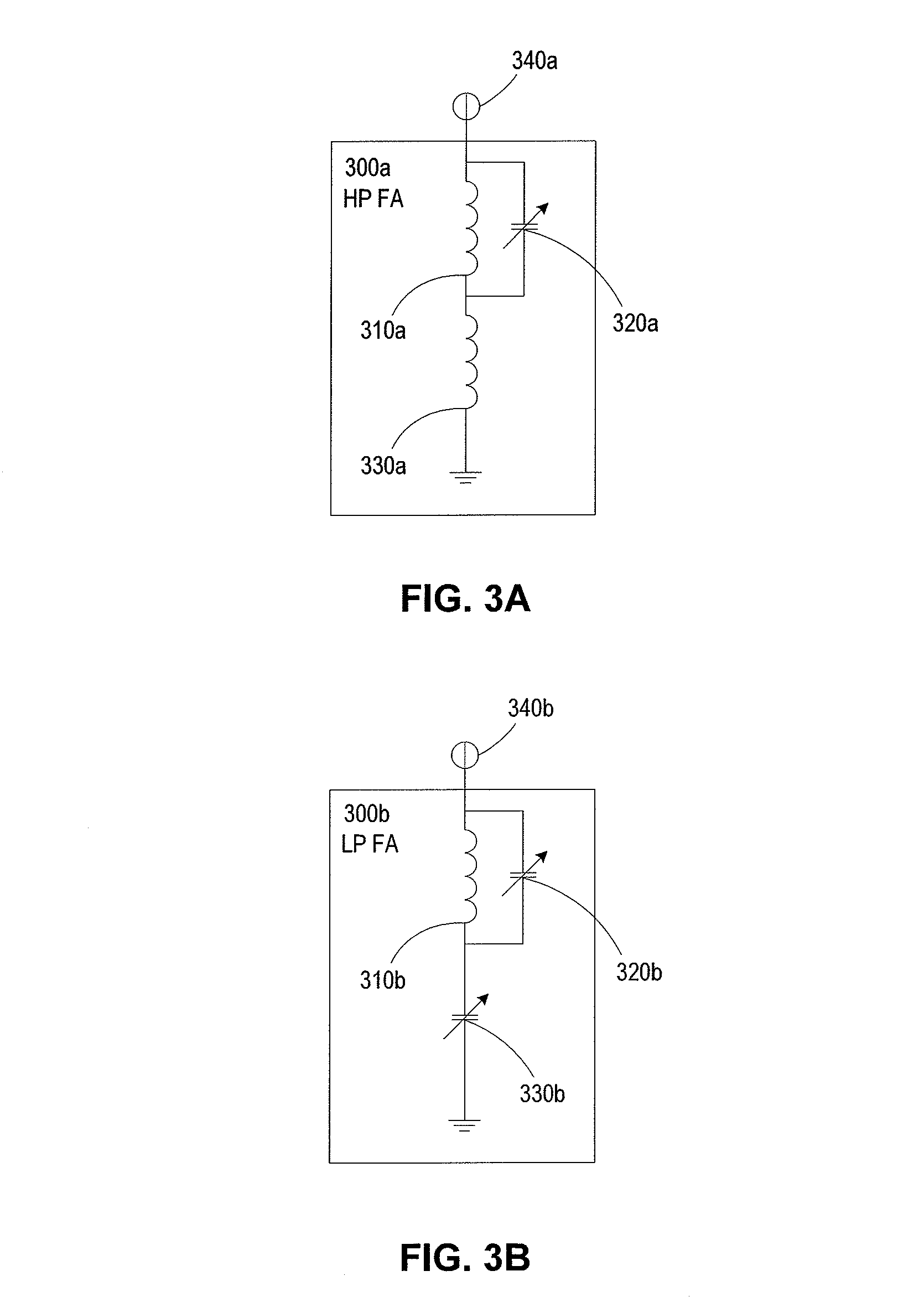Transceiver front-end
a transceiver and front-end technology, applied in powerline communication systems, powerline communication systems, electrical equipment, etc., can solve the problems of increasing the size of the transceiver implementation, affecting the transmission of signals, and affecting the operation of the transceiver, so as to avoid power loss due to a dummy load, avoid the matching of dummy loads to antenna impedance, and simple and efficient area
- Summary
- Abstract
- Description
- Claims
- Application Information
AI Technical Summary
Benefits of technology
Problems solved by technology
Method used
Image
Examples
Embodiment Construction
[0057]In the following, embodiments will be described where transceiver structures are provided comprising a receiver, a transmitter, a signal transmission and reception arrangement (e.g., an antenna), a transmit frequency blocking arrangement and a receive frequency blocking arrangement.
[0058]The transmitter is connectable to the signal transmission and reception arrangement node via the receive frequency blocking arrangement and the receiver is connectable to the signal transmission and reception arrangement node via the transmit frequency blocking arrangement.
[0059]The transmit frequency blocking arrangement is adapted to block passage of transmit frequency signals between the signal transmission and reception arrangement and the receiver.
[0060]Blocking of transmit frequency signals may be achieved by the transmit frequency blocking arrangement having a blocking frequency interval associated with the transmit frequency and a non-blocking frequency interval associated with the rec...
PUM
| Property | Measurement | Unit |
|---|---|---|
| carrier frequencies | aaaaa | aaaaa |
| carrier frequencies | aaaaa | aaaaa |
| carrier frequencies | aaaaa | aaaaa |
Abstract
Description
Claims
Application Information
 Login to View More
Login to View More - R&D
- Intellectual Property
- Life Sciences
- Materials
- Tech Scout
- Unparalleled Data Quality
- Higher Quality Content
- 60% Fewer Hallucinations
Browse by: Latest US Patents, China's latest patents, Technical Efficacy Thesaurus, Application Domain, Technology Topic, Popular Technical Reports.
© 2025 PatSnap. All rights reserved.Legal|Privacy policy|Modern Slavery Act Transparency Statement|Sitemap|About US| Contact US: help@patsnap.com



